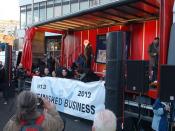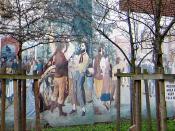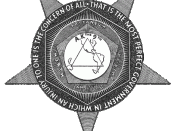- � PAGE �4� -
Unions Undermined
The explosion of mechanization and industrialization in the last quarter of the 19th century brought organized labor into the foreground. The economic, social and political factors exercised influenced organized labor during this period by keeping it under a tight lid. Thus the labor movement emerged with distinct disadvantages in its conflicts with organized capital during 1875-1900.
The success of American industry in the late 18th and early 19th century was built on the exploitation of hundreds of thousands of workers who labored 10-12 hours a day for miserable wages in unsafe factories and lived in bare and comfortless homes. By the late 19th century, mass production and mechanization changed the size and shape of the labor force and the nature of work itself. As evidenced in the testimony of a machinist before the Senate Committee on Labor and Capital in 1883, "â¦the trade has been subdivided and those subdivisions again subdivided so that a man never learns the machinists trade now⦠through this system of work 100 men are able to do now what it took 300 or 400 men to do fifteen years ago."�
While the explosion of industries provided better job opportunities to the workers, they deplored their employers' values. Disgruntled workers started on-the-job protests or resorted to violence to protect themselves and the dignity of labor, with only limited success. Soon the workers realized that they could only fight their employers and inhumane conditions by banding together to form trade unions.
The ethnic diversity of the working class played a distinct part in the success and failure of the union. The American working class was a heterogeneous mixture of people from different cultures, religions and education. A disproportionate amount of workers were immigrants with little or no education and could...



Very good
this essay is very good you stayed right on the point good job thumbs up
0 out of 0 people found this comment useful.